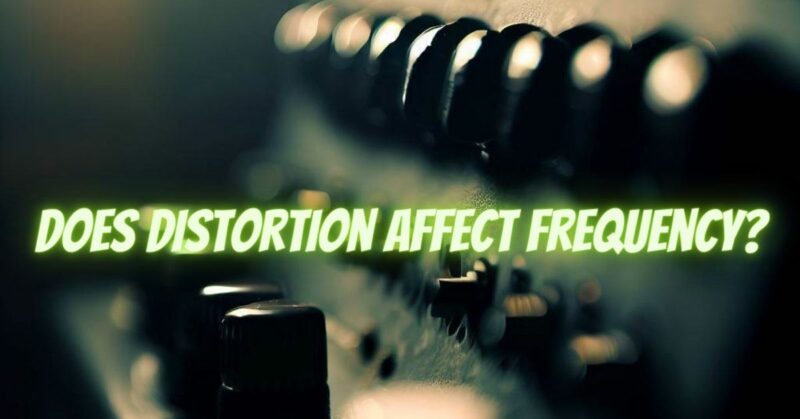Distortion is a widely used and celebrated effect in the realm of audio and music. While it is known for adding harmonics and altering the timbre of sound, one question that often arises is how distortion affects the frequency spectrum. In this article, we will delve into the ways in which distortion influences frequency content, examining its impact on the original signal’s frequency response and the creation of new harmonics.
- Frequency Spectrum Alteration:
Distortion introduces changes to the frequency spectrum of a sound signal. When a signal is distorted, additional harmonics are generated, resulting in an altered frequency response. These new harmonics are typically created at higher frequencies than the original signal’s fundamental frequencies. The distribution and intensity of these harmonics depend on the specific distortion effect, its settings, and the characteristics of the audio source.
- Harmonic Generation and Addition:
Distortion is often achieved through the non-linear behavior of audio processing devices or amplifiers. When the input signal exceeds the device’s linear operating range, it begins to clip or distort, generating new harmonics. These harmonics are multiples of the original frequencies present in the signal, resulting in an expanded harmonic series. The added harmonics contribute to the overall sound coloration and alter the harmonic content of the signal, enriching its complexity and timbral characteristics.
- Emphasis and Attenuation:
The interaction between distortion and frequency is not uniform across the entire spectrum. Different distortion effects and devices may emphasize or attenuate specific frequency ranges. For example, certain distortion pedals or plugins are designed to boost or accentuate mid-range frequencies, resulting in a more pronounced distortion effect in that frequency region. Conversely, some distortions may affect primarily the high frequencies, adding a brighter or grittier quality to the sound.
- Equalization and Tone Shaping:
Distortion can be used in conjunction with equalization to shape the frequency response and achieve desired tonal characteristics. By adjusting the frequency response of the distorted signal using equalization controls, musicians and engineers can emphasize or attenuate specific frequency bands, enhancing the desired sonic attributes or mitigating unwanted resonances. This combination of distortion and equalization provides a powerful tool for tailoring the frequency content and sculpting the overall sound.
- Dynamic Frequency Interactions:
The interaction between distortion and frequency is not solely based on static frequency content. Distortion can introduce dynamic changes to the frequency response based on the input signal’s characteristics and amplitude variations. For example, when a heavily distorted guitar chord is played, the amplitude of each note within the chord can influence the resulting harmonic content and frequency response. This dynamic interplay adds an expressive and responsive element to the distorted sound.
Conclusion:
Distortion has a significant impact on the frequency spectrum of a sound signal. It introduces new harmonics, alters the frequency response, and creates complex timbral characteristics. By manipulating the harmonic content and frequency distribution, distortion shapes the sonic landscape, allowing musicians and audio enthusiasts to achieve a wide range of tonal possibilities. Understanding how distortion affects frequency empowers artists to utilize this powerful effect to enhance their musical expression and create unique and captivating sounds.


